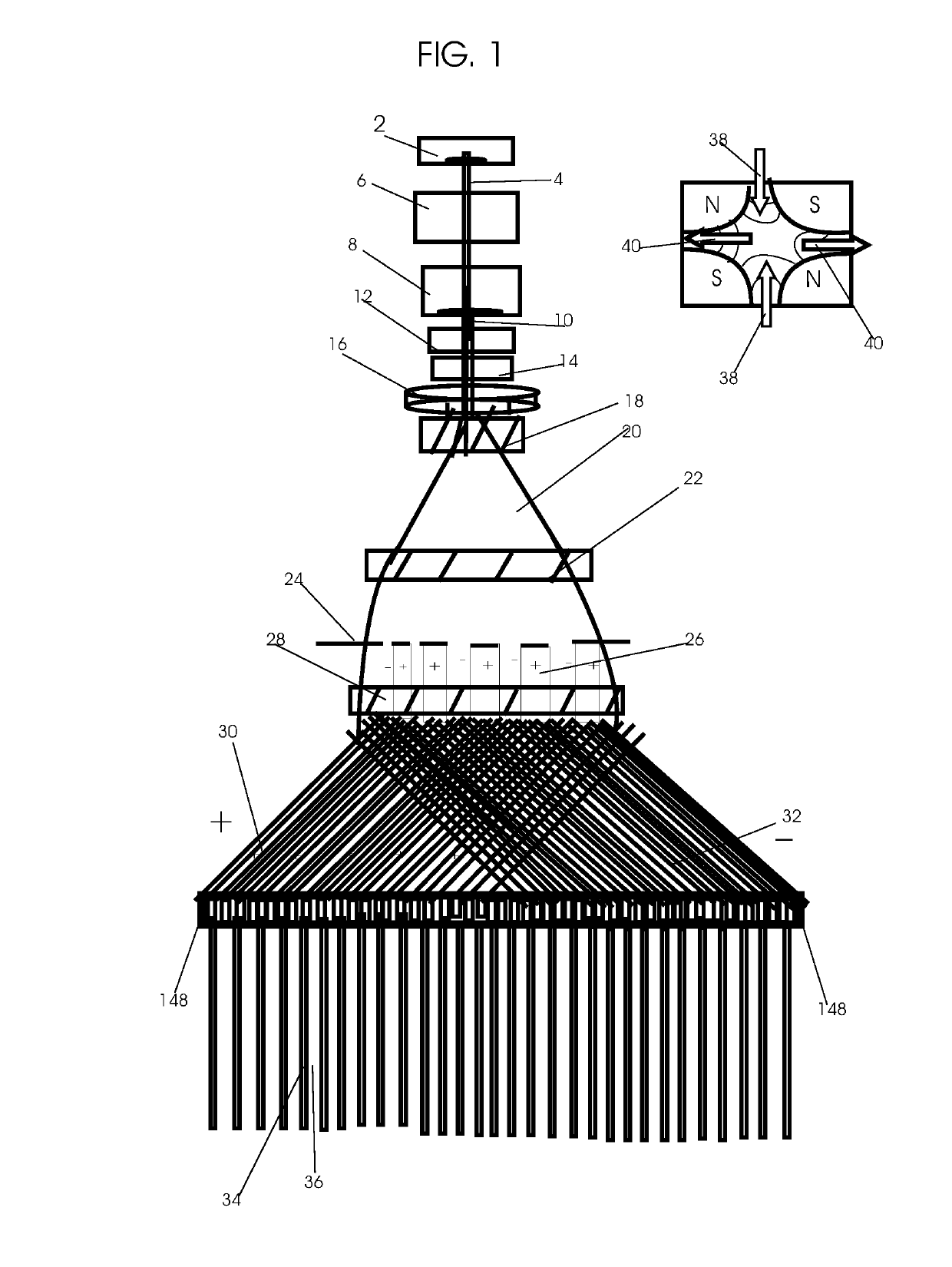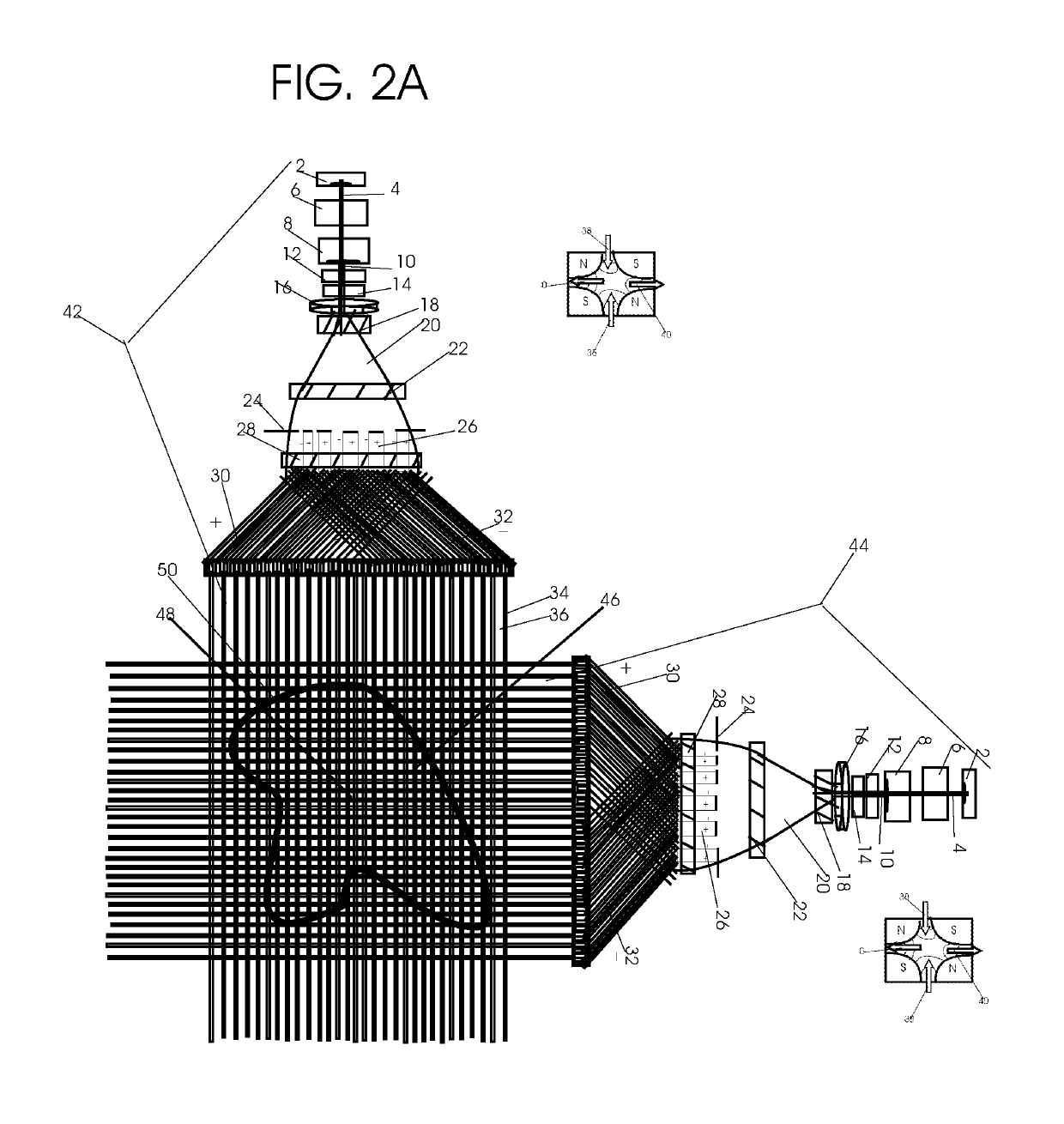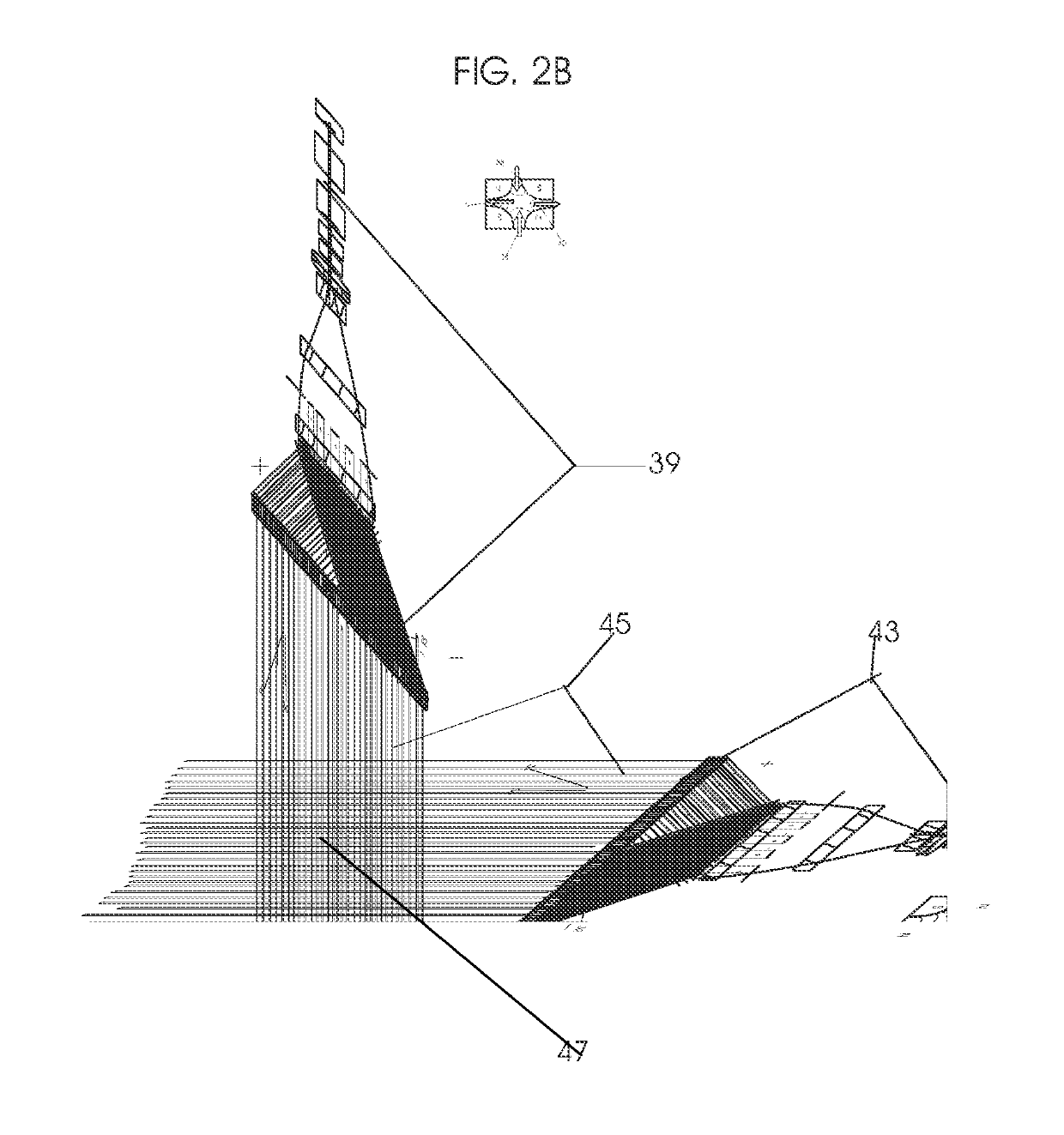Device and methods for adaptive resistance inhibiting proton and carbon ion microbeams and nanobeams radiosurgery
a technology of carbon ion microbeams and radiosurgery, which is applied in the field of adaptive resistance inhibiting proton and carbon ion microbeams and nanobeams radiosurgery, can solve the problems of high dose chemotherapy, dna and protein damage without severe normal tissue damage, and the maximum dose that can be administered to a tumor is limited to about 70 to 80 gy, so as to achieve the highest thermal neutron capture cross-section, eliminate the inefficiency of pas
- Summary
- Abstract
- Description
- Claims
- Application Information
AI Technical Summary
Benefits of technology
Problems solved by technology
Method used
Image
Examples
Embodiment Construction
[0345]FIG. 1 is an illustration of generating numerous simultaneous parallel narrow proton beams by splitting the narrow proton beam from a radiofrequency accelerator combined with a drift tube accelerator for narrow proton beam radiation therapy with minimal or no long term toxicity to normal tissue. Lower energy proton beam is generated in the ion source 2. The beam transport 4 guides it into the radiofrequency accelerator RFQ 6 where it undergoes its first acceleration. The RFQ 6 accelerated multiple pulse negative polarity proton beam is then injected into the drift tube accelerator 8. The drift tube accelerator accelerated multiple pulse negative polarity proton beam 10 passes by a beam stopper 12 that serves as an emergency beam stopper when needed and a dose monitor 14 and the beam aperture collimating collimator 16 into a defocusing in one plane and focusing in another plane quadrupole magnet 18 which spreads out the proton beam in one plane and focuses it in another plane. ...
PUM
 Login to View More
Login to View More Abstract
Description
Claims
Application Information
 Login to View More
Login to View More - R&D
- Intellectual Property
- Life Sciences
- Materials
- Tech Scout
- Unparalleled Data Quality
- Higher Quality Content
- 60% Fewer Hallucinations
Browse by: Latest US Patents, China's latest patents, Technical Efficacy Thesaurus, Application Domain, Technology Topic, Popular Technical Reports.
© 2025 PatSnap. All rights reserved.Legal|Privacy policy|Modern Slavery Act Transparency Statement|Sitemap|About US| Contact US: help@patsnap.com



